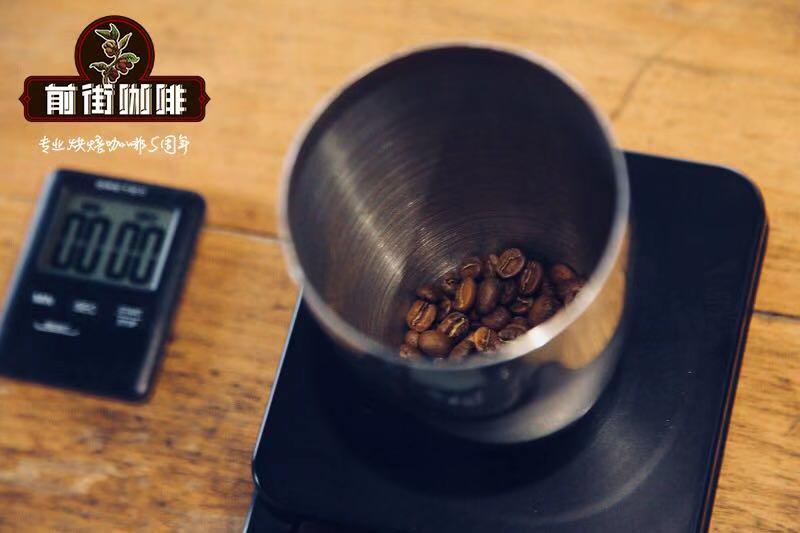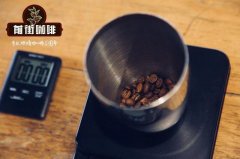What are the characteristics of Arabica coffee grown in India

Professional coffee knowledge exchange more coffee bean information please follow the coffee workshop (Wechat official account cafe_style)
Qianjie-introduction to Indian Coffee
There is very little coffee from Arabica, India, and there are usually only two kinds of coffee: wind-stained Malaba and Masojin bricks. The raw beans of the wind-stained Malaba are dry, yellow and sweet, but slightly monotonous, because they are shipped after they are placed in a ventilated warehouse to be caressed by the Indian Ocean monsoon for several seasons, so they have no sour taste, but the flavor is not enough; but Maiso is a green fresh bean with rich flavor, with wood grass aroma, mellow and low acidity, sweet taste, non-eosinophilic coffee friends, should like this bean.
Mysore is a gold mine in India, which is also rich in coffee beans. Special selection of excellent quality, 18 mesh appearance of washed coffee beans, called Mysore Nuggets Extra Bold (Chinese translation as Mysojin bricks or massogold nuggets), with the first letter combination of MNEB, has become the highest grade of Indian coffee Arabica beans.
Region: Mysore, India
Altitude: 1350m
Production treatment: washing, insolation
Indian coffee Arabica coffee in the name and taste of the most interesting is the non-washing "wind-stained Malabang" (Monsooned Malabar). In the age of navigation. At that time, the ship had to sail for months to reach Europe, and the coffee beans developed a special taste due to the exposure of coffee beans to sea breeze and moisture during the voyage. The color also changed from green to a strange yellow, but Europeans fell in love with this strange and rich flavor, and when steamships shortened their voyage, Indians began to expose their coffee to the wet southwest starting in May or June. the rainy season lasts for five to six weeks to "recreate" the flavor.
The taste of this coffee is quite exciting and strong, mixed with a special caramel flavor; it is not suitable for people who like "refreshing taste" or sweet coffee. If it is roasted for a long time and left for more than three days, Malabang can also be used to make Italian-style mixed coffee. Some companies use this coffee bean with two or three other Arabica beans to make an "exotic" Italian mixed coffee to improve the taste and sweetness of the coffee. The important thing is that freshly roasted coffee beans should be kept for two days, no matter siphon or follicle brewing will make the coffee taste better.
If durian is the king of fruit according to taste, then I think Malabang is the king of Indian coffee.
In short: Qianjie is a coffee research hall, happy to share the knowledge about coffee with you, we share unreservedly just to make more friends fall in love with coffee, and there will be three low-discount coffee activities every month. The reason is that Qianjie wants to make more friends drink the best coffee at the lowest price, which has been Qianjie's tenet for 6 years!
END
Important Notice :
前街咖啡 FrontStreet Coffee has moved to new addredd:
FrontStreet Coffee Address: 315,Donghua East Road,GuangZhou
Tel:020 38364473
- Prev

Is there coffee beans grown in India? Indian wind stains Malabar coffee flavor characteristics
Professional coffee knowledge exchange More coffee bean information Please pay attention to coffee workshop (Weixin Official Accounts cafe_style) Front Street-India Wind Stain Malabar Coffee Introduction India Climate The ideal climate conditions for coffee bean growth are temperatures between 2 - 3 and 28 degrees Celsius, rainfall between 1.5 and 2.0 meters, and a dry season of 2-3 months after the rainy season. Cold temperatures near freezing point are not suitable for conditions
- Next

Flavor characteristics of Nicaraguan Yushi Coffee Bean
Professional coffee knowledge exchange more coffee bean information please follow the coffee workshop (Wechat official account cafe_style) front street-Nicaragua Yushi variety introduction to Nicaragua Yushi variety: the latest Ethiopian variety found in Nicaragua-Yushi. It is the latest Ethiopian variety discovered in the world! But the discovery was entirely accidental. Nicaraguan raw bean exporter Exp
Related
- Beginners will see the "Coffee pull flower" guide!
- What is the difference between ice blog purified milk and ordinary milk coffee?
- Why is the Philippines the largest producer of crops in Liberia?
- For coffee extraction, should the fine powder be retained?
- How does extracted espresso fill pressed powder? How much strength does it take to press the powder?
- How to make jasmine cold extract coffee? Is the jasmine + latte good?
- Will this little toy really make the coffee taste better? How does Lily Drip affect coffee extraction?
- Will the action of slapping the filter cup also affect coffee extraction?
- What's the difference between powder-to-water ratio and powder-to-liquid ratio?
- What is the Ethiopian local species? What does it have to do with Heirloom native species?

